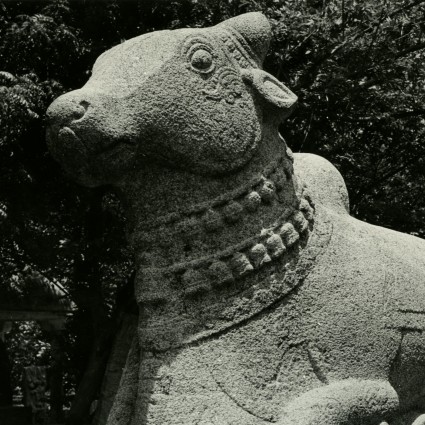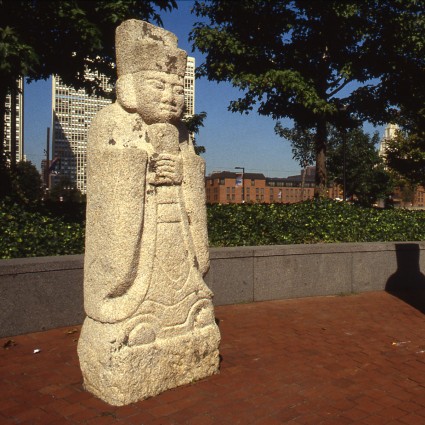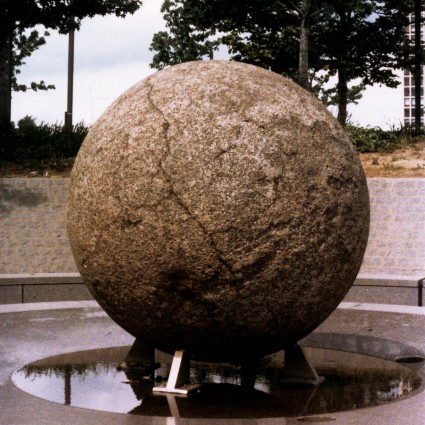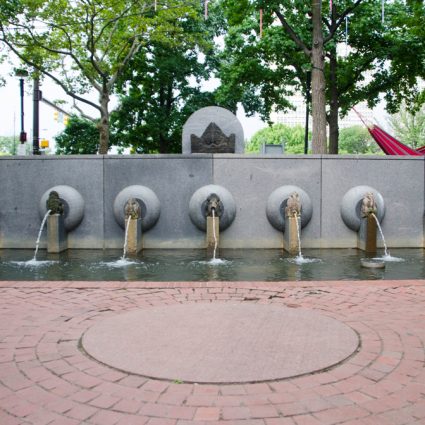At A Glance
This artwork is currently in storage
House Post (Totem) was among the sculptures included in an International Sculpture Garden at Penn’s Landing
Native Americans of the northwest Pacific coast carved several different kinds of cedar totem poles
This totem is a central house pole that belonged to the Kwakiutl of the coastal lands around Queen Charlotte Strait
House Post (Totem), also referred to as Central Post, is among several sculptures that were included in an International Sculpture Garden at Penn’s Landing, along the Delaware River between Walnut and Spruce Streets. Due to redesign of the waterfront site, these sculpture are currently in storage in anticipation of the potential relocation of the International Sculpture Garden.
Native Americans of the northwest Pacific coast carved several different kinds of cedar totem poles. Inside the house, carved poles supported the roof. Outside, or attached to the front of the house, were frontal or memorial poles carved with mythical figures or symbols of the family. A third type of pole served as a coffin. The totem that is part of the International Sculpture Garden (acquired with support from the Knollbrook Trust) is a central house pole. It belonged to the Kwakiutl of the coastal lands around Queen Charlotte Strait. The iconography includes a bird, a copper coin (symbol of wealth), and a grizzly bear.
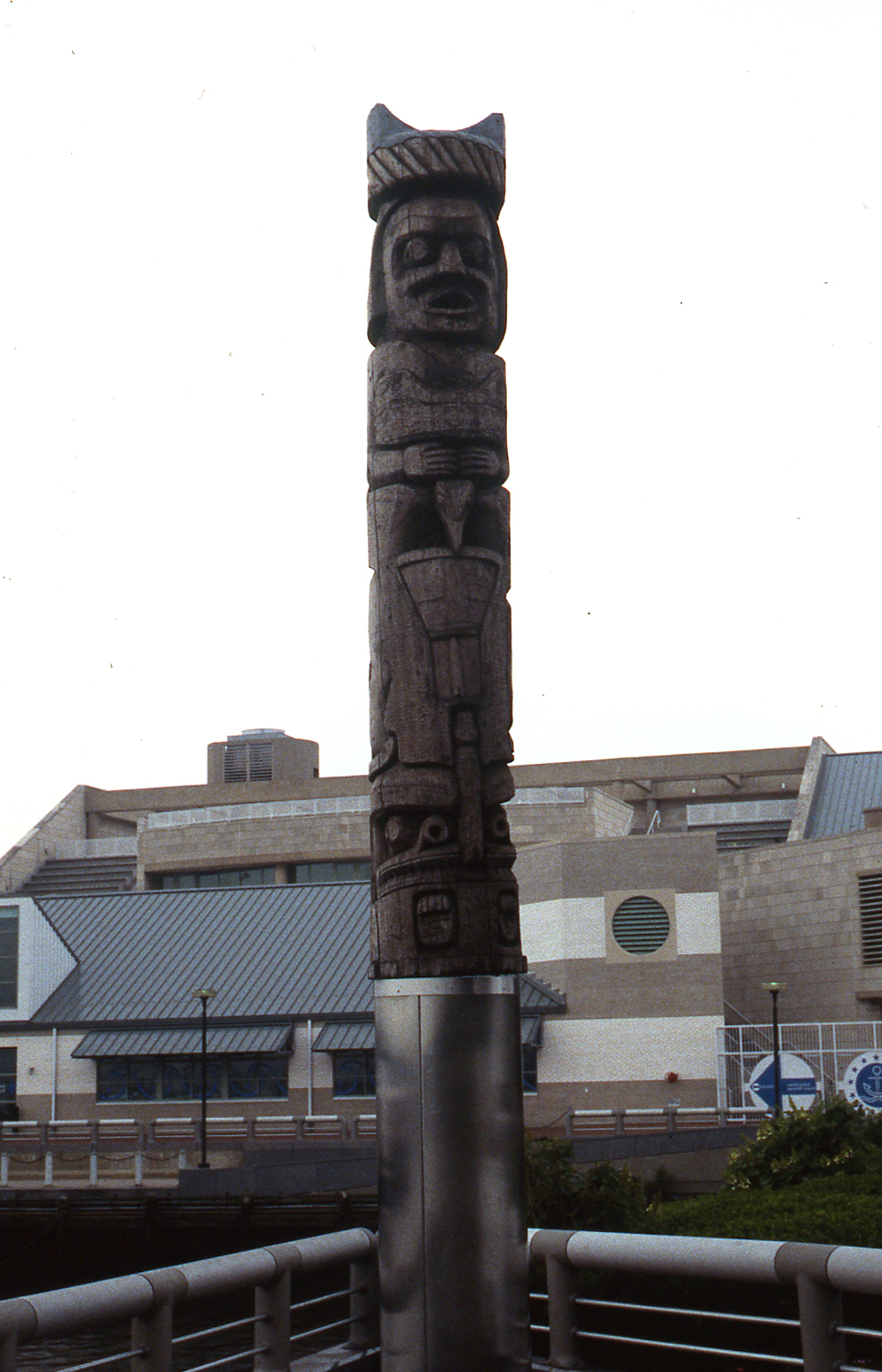
The International Sculpture Garden
The International Sculpture Garden was conceived by the Fairmount Park Art Association (now the Association for Public Art) in the 1960s as part of the anticipated U.S. Bicentennial celebration. The open-air installation celebrated and demonstrated the impact of other cultures on the American experience, with a focus on ancient and ethnographic artworks. “Each individual piece,” the Association noted, “should not only be typical of that nation’s heritage, but should also be of the highest quality.” The sculpture collection includes a group of significant objects from diverse cultures. The Art Association acquired and installed the garden’s sculpture collection over several years.
Since its 1976 dedication, the garden’s site has undergone many changes. In 1992, Venturi Scott Brown and Associates’ Columbus Monument, a 106-foot-high obelisk, was erected at the north end, and a hotel now also occupies a portion of that section. Conditions surrounding the garden have changed dramatically in recent years, leading to a reconsideration of the existing garden site. In anticipation of the potential relocation of the International Sculpture Garden, most of the sculptures have been removed for conservation treatment and placed in storage.
RESOURCES
